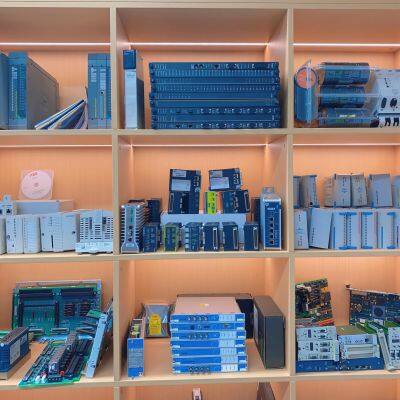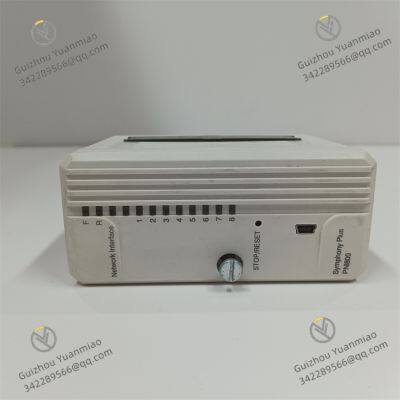Product Description
I. Product Overview
ABB PNI800A, as an elaborately crafted network interface module, has a compact size of only 100mm × 75mm × 35mm and a lightweight design, which makes it extremely convenient to install. It can be easily adapted to both cramped control cabinets and automated production lines with strict equipment layout requirements without occupying too much valuable space. Its shell is made of strong and durable materials, which can effectively resist the erosion of common dust, slight collisions, and some corrosive substances in industrial environments, creating a reliable protective barrier for internal precision electronic components and ensuring stable operation even under harsh working conditions.

II. Performance Characteristics
(1) Communication Interface Features
Multi-protocol support: PNI800A can be called an "all-rounder" in the field of communication protocols, supporting numerous industrial protocols such as PROFIBUS, CANopen, MODBUS, Ethernet/IP, PROFINET, Modbus TCP, etc. This wide protocol compatibility enables it to easily connect different types and brands of field devices. In a production workshop with various automated equipment, there are both old industrial robots following the PROFIBUS protocol and new sensors using the Modbus TCP protocol. PNI800A, relying on its rich protocol support capability, allows these devices to conduct smooth data interaction, avoiding communication obstacles caused by protocol incompatibility.
High-speed communication interface: The module is equipped with high-speed data transmission interfaces. Among them, the EtherCAT communication rate is as high as 96000 bps, and the data transmission rate of some interfaces can even reach 1Gbps. In industrial automation scenarios, a large amount of real-time data (such as equipment operating status data, process parameters, etc.) needs to be transmitted quickly and accurately, and the high-speed communication interface ensures the timely upload and download of data. Taking the high-speed production line in automobile manufacturing as an example, robots, conveyor belts, detection equipment, etc. on the production line generate massive amounts of data every second. The high-speed communication interface of PNI800A can quickly transmit these data to the central control system, providing strong support for the precise control of the production process and greatly improving production efficiency and product quality. At the same time, it provides wired and wireless Ethernet interfaces, as well as serial communication interfaces such as RS 232, RS 422, RS485, and may even support wireless communication technologies such as Wi-Fi and Bluetooth to meet diverse connection needs. In some industrial environments where wiring is difficult, wireless communication interfaces can play a huge role, facilitating flexible access of equipment to the network.

(2) Redundant Design
PNI800A adopts the concept of redundant design and supports PN800 line redundancy. In actual operation, the module is connected to two Ethernet lines. When one of the lines fails due to physical damage, electromagnetic interference, etc., the system can automatically and seamlessly switch to the other normal line to continue data transmission. In the pipeline monitoring system of petrochemical enterprises, the reliability of data communication is related to production safety. Once communication is interrupted, serious accidents may occur. The redundant design of PNI800A ensures that even if a communication line fails in complex underground environments or harsh weather conditions, monitoring data can still be continuously uploaded and control commands can be accurately issued, effectively ensuring the safety and continuity of the production process.
(3) Monitoring and Power Supply Functions
Real-time monitoring function: PNI800A has strong real-time monitoring capabilities, which can comprehensively monitor the status of its own module and the operating conditions of connected equipment. It can obtain key communication indicators such as data transmission rate, bit error rate, and connection stability in real-time. Once an abnormality is found, it will immediately issue an alarm to remind maintenance personnel to quickly check and repair. In the substation automation system of the power industry, a large number of switchgear, protection devices, etc. are connected to the monitoring system through PNI800A. Its monitoring function can ensure the reliability of status monitoring and control command execution of these devices, timely detect and solve potential problems in the communication link, and avoid abnormal operation of the substation caused by communication failures.
Stable power supply guarantee: The module has an input voltage of 24V DC and a power consumption of only 5W, and can provide stable power support for connected equipment. In industrial environments, problems such as power fluctuations and electromagnetic interference are common. The stable power supply performance of PNI800A provides a solid guarantee for the normal operation of equipment. In the high-temperature and strong electromagnetic interference production workshops of the metallurgical industry, its stable power output can provide pure electricity for connected devices such as temperature sensors and pressure sensors, ensuring the accuracy of sensor data collection, and thus providing a reliable basis for the precise control of the production process.

III. Installation Steps
Preparation before installation: Before installing PNI800A, a comprehensive inspection of the equipment is required. Carefully check whether the surface of the equipment has obvious damage, deformation, or rust to ensure that the appearance is intact. Compare with the packing list, carefully check whether the model and quantity of the equipment and its accessories are accurate, so as to avoid affecting the installation progress due to missing accessories or inconsistent models. At the same time, it is necessary to confirm that the technical parameters of the equipment (such as communication interface specifications, power supply requirements, etc.) are consistent with the actual design requirements to ensure that the equipment can be perfectly compatible with the existing system. The installation environment also needs to be strictly controlled. The temperature should be between -40°C and +85°C, and other environmental factors such as humidity should also meet the specified range of the equipment to create good conditions for the normal operation of the equipment.
Electrical connection: Perform electrical connection operations in strict accordance with the electrical drawings to ensure accurate and firm wiring. During the connection process, it is necessary to carefully distinguish the functions of different interfaces to avoid equipment damage or communication failures caused by wrong wiring. For precision interfaces such as optical fiber interfaces, extra care is required during connection to prevent excessive bending or contamination of the optical fiber, which may affect the quality of optical signal transmission. After the connection is completed, comprehensively check all wiring again for firmness to prevent loosening during equipment operation.
Equipment installation and fixing: Install PNI800A accurately at the predetermined position in accordance with the equipment layout drawing and installation instructions, and ensure that the installation is firm. During the installation process, attention should be paid to avoiding collisions or vibrations to the equipment to prevent damage to internal components. If the equipment needs to be installed in a cabinet, the installation position should be reasonably planned to ensure good ventilation, so that subsequent maintenance and repair work can be carried out smoothly.


Bently 145988-01 VGA Display Module
Bently 323174-01 Emergency Shutdown Device
Bently 147663-01 VGA Display I/O Module
GE VMIVME-2540 Counter/Controller
GE F650BFBF2G0HIE Feeder Protection Relay
ABB PM865 3BSE030193R1 Programmable Controller
GE SLN080 IC086SLN080-A PACSystems Industrial Ethernet Switches
GE SLN042 IC086SLN042-A PACSystems Industrial Ethernet Switches
EMERSON 5X00106G02 Analog Input Module
EMERSON 5X00419G02 Controller Module
EMERSON 5X00875G01 Controller Atom CPU Module
EMERSON 1C31113G01 Analog Input Module
 yezi
Hi there! Welcome to my shop. Let me know if you have any questions.
yezi
Hi there! Welcome to my shop. Let me know if you have any questions.





